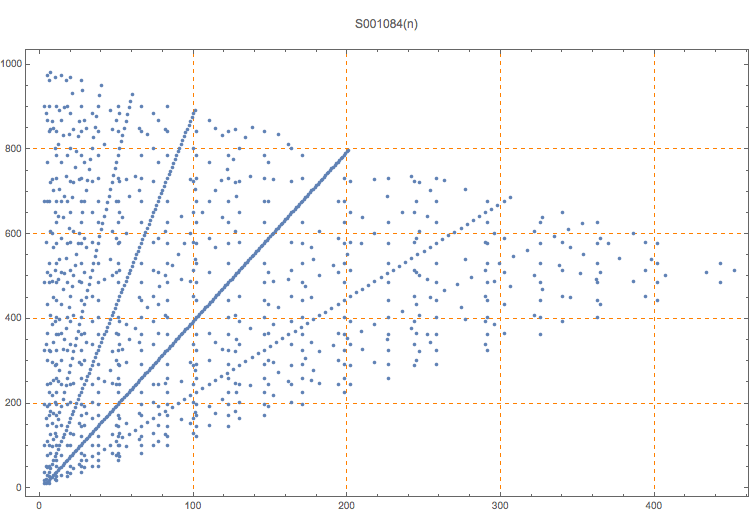Pairs of numbers (n,k) such that there is no n-gonal k-gonal number greater than 1, sorted by the sum n+k and then n.
3, 11, 4, 10, 6, 11, 5, 14, 3, 18, 4, 20, 6, 18, 7, 22, 11, 18, 10, 20, 6, 27, 5, 29, 8, 26, 11, 27, 9, 30, 3, 38, 14, 29, 6, 38, 10, 34, 18, 27, 11, 38, 7, 47, 12, 42, 20, 34, 5, 50, 4, 52, 18, 38, 6, 51, 13, 46, 11, 51, 8, 56, 14, 50, 27, 38, 15, 54, 22, 47
1
This sequence is in OEIS, but shortened. Here we plot each point (n,k). Surprisingly, many of the points occur on lines. The most prominent line is y = 4x-6 for x > 3. For every integer x > 3, y = 4x-6 is a point on the line. There are an infinite number of such lines, which become apparent as the plot is extended. The points on the lower edge of the graph follow a nice pattern: (6,11), (11,18), (18,27),…, (n^2+2,(n+1)^2+2).
T. D. Noe, Plot of 1186 pairs of terms
T. D. Noe, Table of 1186 pairs of terms
(Mma) maxSum = 1000; t = Reap[Do[k = s - n; If[k > n && IntegerQ[Sqrt[(n - 2)*(k - 2)]] && FindInstance[(k - 2)*x^2 - (k - 4)*x == (n - 2)*y^2 - (n - 4)*y && x > 1 && y > 1, {x, y}, Integers] == {}, Sow[{n, k}]], {s, 7, maxSum}, {n, 3, s - 3}]][[2, 1]];
Cf. A188950.
nonn,tabf,nice
T. D. Noe, May 16 2018
